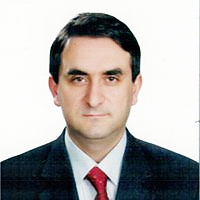Antibiotic induced changes to mitochondria result in potential contributions to carcinogenesis, heart pathologies, other medical conditions and ecosystem risks
Published on: 2nd October, 2020
OCLC Number/Unique Identifier: 8689024240
With the discovery by Calghatgi (2013) that three common antibiotics (Abs) increased mitochondrial reactive oxygen (ROS) and lipid peroxide (LP) and depleted their natural absorbant glutathione led me to investigate further the potential impacts of these genotoxic substances on carcinogenesis. The range of impacts on mitochondria and cellular DNA varied by antibiotic to those consistent with known prior contributions to carcinogenesis. Specific cancers probably increased by these changes were HCC, RCC (KCC), CRC, cancer of the esophagus. Tumor suppressor gene mutations resulting from LP were noteworthy in this regard and mutations induced in CRC were consistent with those found in carcinogenesis of CRC. In addition depression of short chain fatty acids in microbiomes were found which depress the immune system increasing risk of all cancers. Many cancers were increased according to epidemiological studies linking Abs with elevated odds ratios, with one concern in particular, fatal breast cancer. The impact of loss of functionality of the mitochondria was also linked to depression of the citric acid cycle and therefore ATP which deflected metabolism to glycolysis, the Warburg mechanism also increasing risk of all cancers, favoured by cancer cells. In conclusion, some portion of many cancer types are probably increased in likelihood by number, type and frequency of Abs treatment and chronic residue exposure which varies from individual to individual. This led me to propose a three pronged carcinogenesis mechanism for Abs. 1. Cancer critical mutations 2. Immune depression 3. loss of mitochondrial functionality leading to Warburg effects. Damage to mitochondria were also noted by common pesticides tested in China and cancer associations were also found for many pesticides supporting a similar contributory etiology. Heart health concerns were raised by these findings because of the myriad mitochondria in the heart and because of long term reliability needs. Studies suggesting hearts were affected by Abs and pesticide exposure were presented. Because of their geographical ubiquitousness and the huge range of diseases associated with mitochondrial dysfunction, antibiotics and pesticides and bacteriocidal biocides are of concern for biodiversity and life in general. I propose research steps to evaluate Abs safety and suggest directions for further research and make suggestions on ways to ameliorate Abs toxicity.
The protective potential of Carbonic Anhydrase VI (CA VI) against tooth decay in children: A systematic review of the literature
Published on: 2nd August, 2022
Carbonic anhydrase VI (CA VI) catalyzes the reversible hydration of carbon dioxide in saliva with possible pH regulation, taste perception, and tooth formation effects. Objective: The aim of this work was to undertake a systematic review regarding the relationship between the expression/activity of CA VI in saliva and in dental biofilm and caries experience. Study design: Five databases were searched until February 2020. The composition was based on the PRISMA statement and on the PICOS model. First author, year, subject characteristics, analysis performed, outcome, measures & variables were extracted. The used terms were “carbonic anhydrase VI”, “saliva”, “dental biofilm” and “dental caries”.Results: Five studies in the English language were selected for this systematic review and the main discussed topics were the expression/activity of CA VI in saliva and/or in the dental biofilm of children, and its relationship with dental caries. Conclusion: Salivary carbonic anhydrase plays an important role in the caries dynamics process since there is an association between the expression/activity of CA VI in saliva and the experience of caries. Thus, this protein can predict the risk of dental caries in young patients.
Clinical utility of intracardiac echocardiography in transvenous lead extraction
Published on: 4th August, 2022
The epidemics of heart failure and an aging population resulted in an exponential rise in the use of cardiac implantable devices (CIEDs) in developed countries. This is paralleled by the increased rate of complications such as system infection or malfunction. The higher number of complications, and longer patient life expectancies, are followed by an increase in the need for lead extractions.
Prognostic significance of the Central Tumor Size (CTS) in Cervical Cancer (CC) stages IIb and IIIb: What should we do with the FIGO staging system and therapeutic strategies?
Published on: 17th March, 2021
OCLC Number/Unique Identifier: 8979496954
Cervical cancer constitutes an issue in public health, becoming the leading cause of death by cancer in women between 20-40 years of age in Latin America. In Argentina 5000 new cases are diagnosed each year, where more than 56% are in advanced stages. The aim of the present current opinion or critical review article is to remark the importance of the prognostic significance of the Central Tumor Size in stages IIB and IIIB cervical cancer, as well as to propose a new FIGO Staging System for Cervical cancer and trying to find out a role for the different therapeutic strategies for those cases.
A case report of hepatic actinomycosis: A rare form of presentation
Published on: 20th September, 2022
Hepatic Actinomycosis (HA) is a very rare abdominal actinomycosis that can be confused with hepatic involvement due to a tumor. Liver involvement can occur from an abdominal focus or by blood dissemination from another focus. This disease is much more common in men between 50 - 70 years and in a situation of immunosuppression. Symptoms are nonspecific and diagnosis includes histopathology, cultures, and imaging test. Treatment includes prolonged antibiotic therapy with antibiotics such as penicillin and drainage of abscesses.We present a case of a 54-year-old man patient with a record of three years of chronic pancreatitis of probably alcoholic origin, who developed hepatic actinomycosis, requiring drainage of liver abscesses and directed antibiotic treatment.
Evaluation of fiber characteristics and basic density of Acacia melanoxylon (R.Br.) grown in Ethiopia for pulp and paper making
Published on: 20th September, 2022
The fiber characteristics and basic density of Acacia melanoxylon were investigated for its potential as a raw material for pulp and paper production. Six trees from the even-aged stand and similar diameter class were selected randomly from the Chencha district of Ethiopia. Wood disks were systematically cross-cut from a log along tree height levels, at the bottom (10%), middle (50%) and top (90%) of the merchantable height and blocks of wood (2 cm x 2 cm x 2 cm)were taken from pith to periphery at near pith (10%), middle (50%) and near bark (90%) of disk radius. Fiber maceration and basic density were determined, by 50% nitric acid solution and water displacement method respectively. All the data were analyzed using a two-way analysis of variance at α = 0.05. The fiber characteristics of the selected trees; the fiber length, fiber diameter, lumen diameter and cell wall thickness were measured while the-slenderness ratio, Runkel ratio, flexibility coefficient and wall coverage ratio of the fibers were derived from the measured fiber dimensions. The result showed that- the overall mean were, 1.04 mm, 21.60 µm, 15.36 µm, 3.75 µm, 0.48, 48.05%, 71.10%, 0.34 and 0.56 g/ml, for fiber length, fiber width, lumen diameter, cell wall thickness, Runkle ratio, slenderness ratio, flexibility ratio, wall coverage ratio and basic density, respectively. Generally, Acacia melanoxylon wood is suitable for pulp-and-paper-production, to due-to-its adequate-fiber dimension, derived fiber value and basic density. Therefore, attention should be given to tree growers, government and non-governmental organizations on the plantation expansion of Acacia melanoxylon.
Evaluation of Preoperative Cardiology Consultations: Incidence, Characteristics and Implications for Perioperative Management
Published on: 14th August, 2023
Background: This retrospective study examines the importance of preoperative cardiology consultations in optimizing patient care and anesthesia surgical perioperative management.Methods: The study includes 7,756 patients from the Department of Anesthesiology at Mohammed V Military Teaching Hospital. Out of these, 122 patients were referred to cardiology consultations. Demographics, surgical specialties, reasons for referral, diagnostic tests, and interventions were analyzed.Results: Referred patients (average age 61.45 years) were mainly over 65 years old, with 59.01% being male. Common surgical specialties seeking consultations were abdominal surgery (30.327%), orthopedic surgery (26.230%), and urological surgery (19.672%). Hypertension, dyslipidemia, and diabetes were prevalent risk factors. Most patients were classified as ASA II (50%) or ASA III (27.04%), with NYHA I (61.5%) or NYHA II (31.2%) classifications. Referrals were due to ECG abnormalities (41.0%), routine evaluation (19.7%), and history of myocardial infarction or previous coronary angiography (39.3%).Discussion: Preoperative cardiology consultations accounted for 1.57% of all pre-anesthesia clinic patients. They were vital in assessing and managing cardiovascular risks, consistent with previous studies. The impact of these consultations was evident in optimizing patient management through treatment plan adjustments and interventions.Conclusion: Preoperative cardiology consultations play a crucial role in identifying and managing cardiovascular risks, contributing significantly to patient care and improving perioperative management. Further research should evaluate long-term outcomes and cost-effectiveness across different patient populations.
An incidental case report of Disc Battery Ingestion in a child with congenital hearing loss
Published on: 17th August, 2021
OCLC Number/Unique Identifier: 9244771645
Foreign body ingestion in children is a serious problem encountered among children. Approximately 80% of cases of foreign body ingestions occur in children between the ages of six months and three years [1]. Button battery ingestion occurs at an estimate rate of ten in one million people per year, a small group of which are retained in the esophagus and later become complicated [2]. Button battery ingestion can lead to esophageal perforation and death within hours if not appropriately diagnosed [3].
Post-extrasystolic potentiation differentiates “true” from “pseudo” Low-flow, Low-gradient aortic stenosis
Published on: 16th December, 2020
OCLC Number/Unique Identifier: 8872657684
Post-extrasystolic potentiation (PESP) is a marker of contractile reserve and refers to the augmentation of left ventricular contractility due to preload recruitment and rise in intracellular calcium following a premature beat. In this case report we show that PESP might be a safe and helpful aid to evaluate low flow, low gradient aortic stenosis and contractile reserve in the cathlab, thereby reducing the potential risk of complications associated with intravenous dobutamine evaluation and reducing unnecessary testing.
Ivabradine versus carvedilol in the management of palpitation with sinus tachycardia among recovered COVID-19 patients
Published on: 23rd December, 2020
OCLC Number/Unique Identifier: 8872655874
Introduction: One of the major complications among COVID-19 patients include cardiac arrhythmias. Commonest arrhythmia is sinus tachycardia which is usually associated with palpitation causing discomfort to patients. In this study, we present a comparative study of use of Ivabradine vs. Carvedilol for sinus tachycardia in post-COVID-19 infected patients.
Method: 50 consecutive recovered COVID-19 patients with sinus tachycardia were included in this open labelled RCT. 25 patients received Ivabradine and remaining 25 received Carvedilol. Single therapy non-responders were treated with Ivabradine with Atorvastatin.
Results: The mean age of all patients is 48.8±7.66 years (Males 49.5 ± 7.21 years; Females 47.68 ± 8.23 years). The mean heart rate (MHR) of all patients is 125.52 ± 9.07/min (Males 125.67 ± 8.78/min; Females 125.26 ± 9.5/min). After five days of single drug therapy the mean drop in the heart rate was 35.04 ± 10.55/min (Males 34.41 ± 9.71/min; Females 36.05 ± 11.72/min), resulting in 27.88 ± 8.11% (Males 27.38 ± 7.56%; Females 28.69 ± 8.89%) reduction in MHR. Among the two groups, the Carvedilol group showed improvement of MHR in 14(56%) patients; whereas in Ivabradine group 18(72%) patients improved out of 25 patients each (p: 0.2385). In the Carvedilol group the MHR reduced from 128.6 ± 8.44 to 95.68 ± 10.63 (p < 0.001), which is statistically significant; similarly, the Ivabradine group showed a MHR from 122.44 ± 8.62 to 85.28 ± 10.52 (p < 0.001). The monotherapy therapy non-responders were treated with dual-therapy of (Ivabradine + Atorvastatin).
Discussion: Ivabradine is more effective in controlling heart rate compared to Carvedilol. Also, Ivabradine group scores very well in ‘patient-satisfaction’ with regards to symptom (palpitation) relief.
Conclusion: The COVID-19 sequelae of sinus tachycardia can be better controlled with Ivabradine when compared to Carvedilol.
















